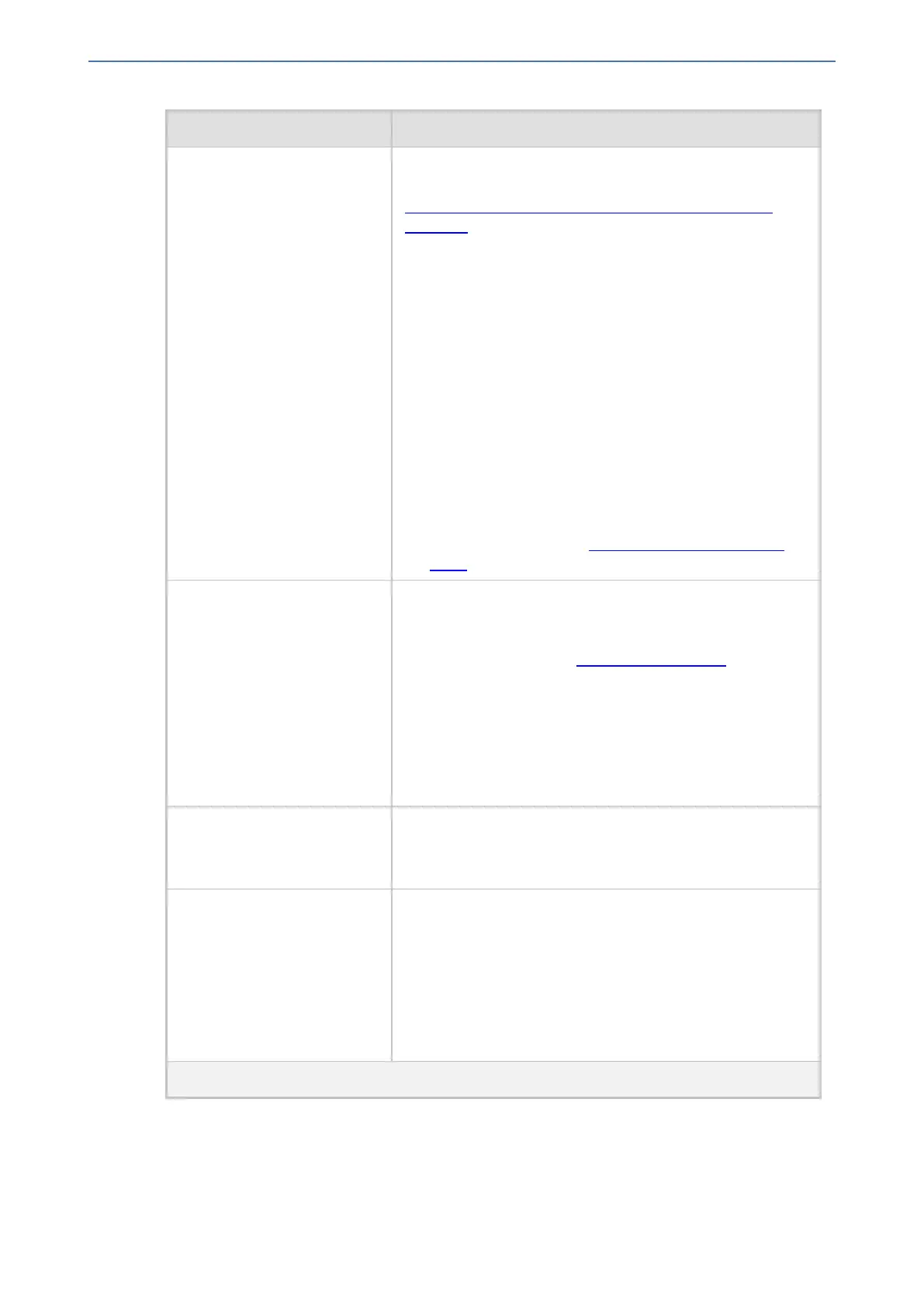CHAPTER25 Routing
Mediant 1000 Gateway & E-SBC | User's Manual
Parameter Description
For LDAP-based routing, enter the string "LDAP" to denote
the IP address of the LDAP server. For more information, see
Active Directory-based Routing for Microsoft Skype for
Business.
Note:
■ The parameter is ignored if you have configured a
destination IP Group in the 'Destination IP Group' field (in
this table).
■ To reject calls, enter the IP address 0.0.0.0. For example,
if you want to prohibit international calls, then in the
'Destination Phone Prefix' field, enter 00 and in the
'Destination IP Address' field, enter 0.0.0.0.
■ For routing calls between phones connected to the device
(i.e., local routing), enter the device's IP address. If the
device's IP address is unknown (e.g., when DHCP is
used), enter IP address 127.0.0.1.
■ When using domain names, enter the DNS server's IP
address or alternatively, configure these names in the
Internal DNS table (see Configuring the Internal DNS
Table).
'IP Profile'
ip-profile-id
[PREFIX_ProfileName]
Assigns an IP Profile to the routing rule in the outgoing
direction. The IP Profile allows you to assign various
configuration attributes (e.g., voice coder) per routing rule. To
configure IP Profiles, see Configuring IP Profiles.
If you do not configure the parameter, the device uses the
following IP Profile:
■ If an IP Group is configured for the destination
('Destination IP Group' parameter), the device uses the
IP Profile associated with the IP Group.
■ If no IP Group is configured, the device uses IP Profile 0
'Destination Port'
dst-port
[PREFIX_DestPort]
Defines the destination port to where you want to route the
call.
'Transport Type'
transport-type
[PREFIX_TransportType]
Defines the transport layer type used for routing the call.
■ [-1] = (Default) Not configured and the transport type is
according to the settings of the global parameter,
SIPTransportType.
■ [0] UDP
■ [1] TCP
■ [2] TLS
Advanced
- 590 -

